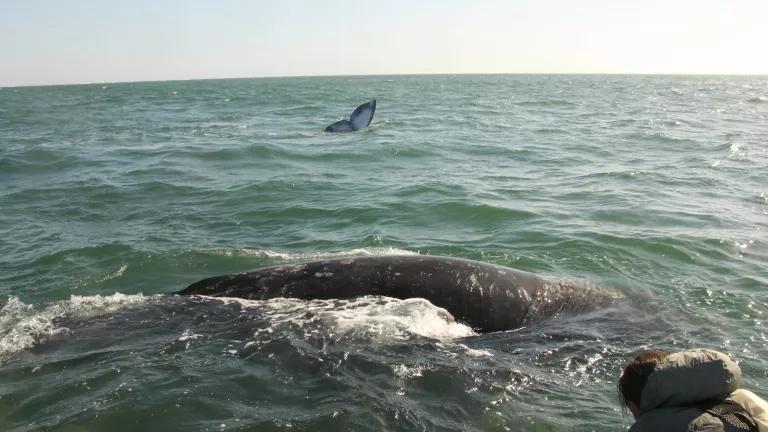Holding Mexico Accountable for Vaquita Extinction
Mexico has a choice. It can save the vaquita by enforcing its laws and regulations or it can let the vaquita go extinct. It has already shown that it is inclined to choose extinction. The United States and others, like the Parties to CITES, should make Mexico pay a very high price for that choice.
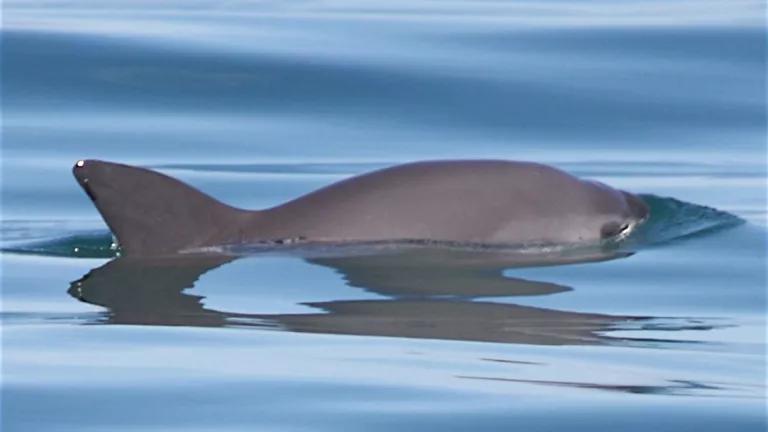
Vaquita
There are many reasons why the vaquita is facing extinction. Shrimp fishermen used deadly gillnets for decades, killing hundreds of vaquita. U.S. importers maintained demand for shrimp from vaquita habitat despite knowing about the harm shrimp fishing was causing vaquita. Mexican and international NGOs celebrated half-measures that didn’t require evidence of a reduction in vaquita deaths. And in recent years, poachers used vaquita-killing gillnets to illegally catch totoaba to fill demand for their swim bladders in China. So, yes, there are many places to point fingers. But as the pace of species extinctions picks up, let us place blame at the feet of those ultimately responsible: governments. In the case of vaquita, Mexico should be blamed and must be held accountable.
That’s why NRDC and our coalition partners are holding strong on sanctions, making it clear to the United States that its ban on imports from vaquita habitat must hold firm and that Mexico is far from meeting US standards for protecting vaquita. We’re asking Parties to the Convention on International Trade in Endangered Species of Wild Fauna and Flora (CITES) to join the United States in holding Mexico accountable. CITES can sanction Mexico for its failure to meet its international obligations and it should. And we’re also making the case before the World Heritage Centre that Mexico’s World Heritage site remains in danger and Mexico has not taken adequate corrective measures to save this part of the world under Mexican stewardship.
The vaquita is the smallest porpoise species, weighing less than the average human 13-year-old. It is only found in the most northern portion of Mexico’s upper Gulf of California. Its closest relative genetically, the Burmeister’s porpoise, lives more than 3,000 miles away. Scientists believe the vaquita diverged from their eventual Burmeister relatives more than 2.5 million year ago. Its name, meaning little cow in Spanish, derives from its unique black coloring around its eyes and mouth. A shy and elusive species, many fishermen who’ve fished in vaquita habitat for years claim to have never seen the animal. In short, it’s an amazing, unique species, which would be thriving today but for Mexico’s choices.
The entirety of vaquita habitat is within Mexico’s territorial waters. Those waters are subject to Mexican law, fisheries regulation, Naval patrols, and all other authorities exercised by a sovereign power. Mexico has never said that it legally or functionally cannot control what takes place in vaquita habitat. Nor would it; of course, Mexico has both the authority and power to control whether gillnets—the sole threat to vaquita survival—are used in the small area of vaquita habitat. The existence of gillnets in vaquita habitat is a choice. So far, Mexico has chosen to not stop the use of gillnets.
Because of this choice, Mexico has faced international pressure. Pressure from CITES to control the poaching and trafficking of totoaba or face compliance measures, which could include trade sanctions against Mexico. And most importantly, pressure from the United States, which in 2018 banned the import of certain fish and fish products caught with gillnets in vaquita habitat. These pressures recently led the Mexican government to adopt regulations in September 2020 and January 2021 that potentially offer the vaquita important, new protections. But only if they are enforced. Unfortunately, illegal fishing continues, which is a familiar patter as the Mexican government has a long history of issuing, but not enforcing, regulations. The International Union for Conservation of Nature (IUCN) recently described illegal fishing as “uncontrolled,” and the Mexican government is considering shrinking the area in which gillnets are currently banned.
In December 2020, IUCN Cetacean Specialist Group (“IUCN CSG”) published new data demonstrating that “illegal fishing remains at high levels and takes place day and night.” The IUCN CSG provided three maps documenting illegal fishing activities in October 2020 (Figure1), November 2020 (Figure 2), and December 2020 (Figure 3). The maps depict hundreds of pangas—most fishing for shrimp with gillnets—within the Zero Tolerance Area, where both gillnetting and transit of any vessels are supposed to be strictly prohibited to protect the vaquita.
These data demonstrate that, despite Mexico’s promises and regulatory improvements, the same fact remains: Mexico has failed to halt gillnet fishing in the vaquita’s habitat.
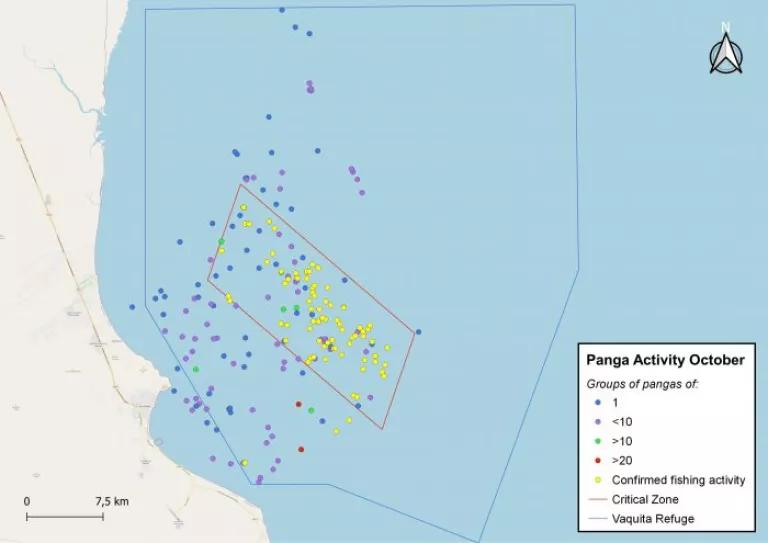
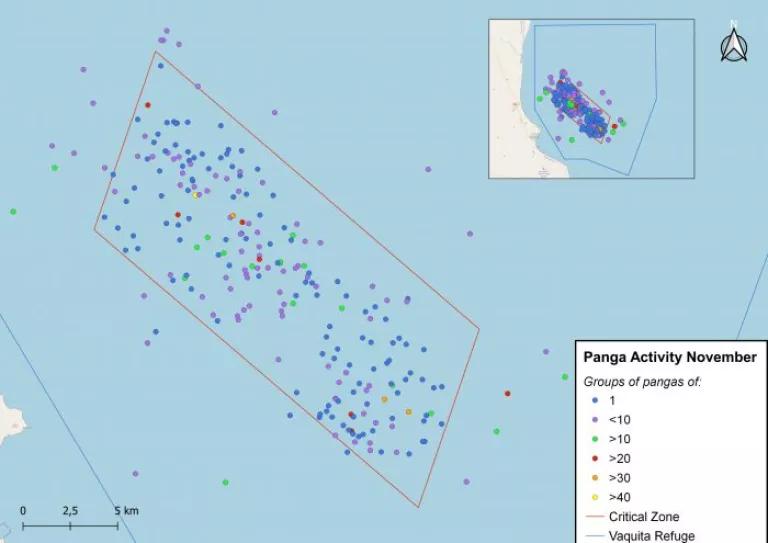
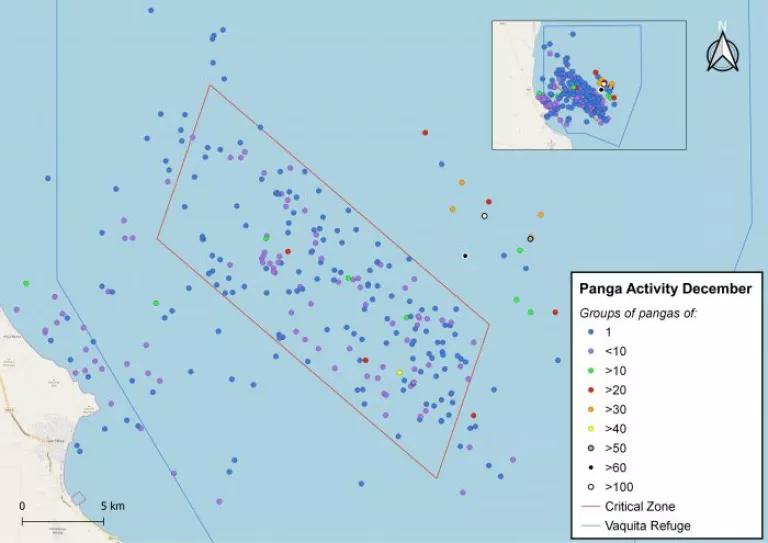
If anything, fishers have become more brazen in their efforts to continue illegal fishing, not only doing so in broad daylight, but also attacking those engaged in patrolling the area and removing illegal fishing nets. On December 31, 2020, fishermen in 5–7 pangas violently attacked two Sea Shepherd Conservation Society vessels, the Farley Mowat and Sharpie, inside vaquita habitat launching lead weights and Molotov cocktails at the crew and military officials on board.
The failure to enforce the gillnet prohibition in the Upper Gulf is indicative of a systemic problem in Mexico to responsibly manage and enforce its fishing regulations, as highlighted in a September 2020 assessment by Vanda Felbab-Brown of the Brookings Institute:
“Fisheries management and enforcement in Mexico involves a complex and mostly ineffective tangle of institutions that tend to be under resourced, susceptible to corruption, and engage in buck-passing. . . . Well-meaning and dedicated officers get easily disheartened by the rock-bottom slashed budgets the López Obrador administration imposed, hollowing out already critically weak management, inspection, enforcement capacities—an institutional morass.”
Mexico has made it clear that the only thing will force it to save the vaquita is tangible economic pressure. Economic sanctions are the only tool that has forced Mexico to act. Its September 2020 and January 2021 regulations were a direct response to the import ban imposed by the United States. Now is not the time to reduce pressure. Now is the time to apply more. Mexico has a choice. It can save the vaquita by enforcing its laws and regulations or it can let the vaquita go extinct. It has already shown that it is inclined to choose extinction. The United States and others, like the Parties to CITES, should make Mexico pay a very high price for that choice.


